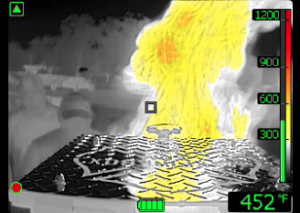
We receive numerous questions or statements about TIC failures.
Some of the most common statements/questions are?
We entered the structure, moved a few feet, and the TIC was useless. Why?
What happens when I wipe the lens and I still can’t see?
The TIC whites out all the time. Thats why I don’t carry it.
What TIC limitations should we be aware of?
Many firefighters have not been properly taught the limitations and contraindications of thermal imaging cameras. In certain environments a TIC can be rendered blind due to the following reasons:
* Low uniform temperatures which means the entire area within the field of view is the same temperature or similar temperatures. This creates a scene/image that is “washed out” with no or little detail. It can appear to be grey or white across the entire image.
* High moisture content environments such as multiple sprinkler heads flowing in a cold smoke environment. This can create an image with no detail at all due to moisture build up on the lens that isn’t wiped or cleared regularly.
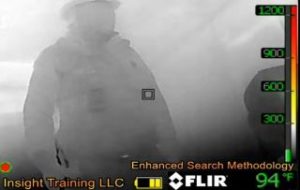
* High uniform temperature environments: All TIC’s have a maximum dynamic range or temperature range and if the area within the field of view has reached this a firefighter will see no discernible details as the TIC has reached saturation. Depending on the model, resolution, and thermal sensitivity of the TIC will affect the image quality. In certain models, when colorization engages, firefighters cannot see details within the colorized areas. Many firefighters do not know when their TIC engages colorization, if they can see through the colorization, and if it does so in High & Low Sensitivity.
* Wiping the lens: Many firefighters fail to wipe the “front of the TIC” which is where the germanium lens is located. In many cases, firefighters will stand up in the exhaust which constantly fogs up their Facepiece and the lens of the TIC. Our Facepiece and the germanium lens have a similar temperature failure rating at 400 degrees Fahrenheit.

* Inability to see through glass: Many thermal imaging classes teach that thermal imaging cameras can’t see through glass. Technically, thermal imaging cameras don’t “see through” anything but they detect infrared energy being emitted or reflected by surfaces. As shown in this video, single pane glass allows IR energy to be transmitted through whereas newer double pane glass has a low E rating which means it reflects energy well. Firefighters can see heat signatures around the window and a cloudy effect where the inert gases to be heated up within the panes.
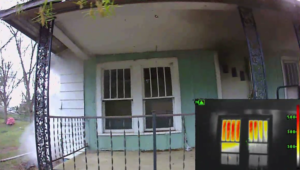
* TIC’s are not X-ray vision: The device itself detects temperature differences in surfaces based on emissivity, the distance to the target, resolution of the TIC, and the specific programming of the device (such as image enhancement or edge definition).
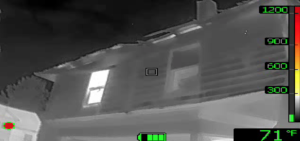
* TIC’s are not thermometers: They are not to be used to look for exact measurements. In certain cases, these devices can be several hundred degrees off from the accurate measurement. Fire service TICs should not be used for reading body temperatures and the use of the spot temperature measurement should be avoided during fire attack.
* Intrinsic safety: NFPA 1801 certified models are required to be intrinsically safe. In other models, they are not intrinsically safe and could create a spark. If your department is using AFG grant funds, they are required to purchase an NFPA 1801 certified TIC.
* TICs cannot detect gases or smoke temperatures: Fire service TICs can detect the effects of gases such as the gas line image shown in the video. This does not mean we are seeing the gases. We are detecting the surface temperatures of the dirt due to the gas cooling the dirt.
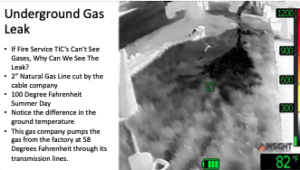
These are but a view of the limitations of thermal imaging but more importantly the means to overcome these limitations is knowledge and understanding. Firefighters who know more about what they are looking at than what they are looking through will properly interpret the data presented to them.
Stay Intelligently Aggressive.
Insight Training LLC
Thermography Certified Fire Service Professionals
